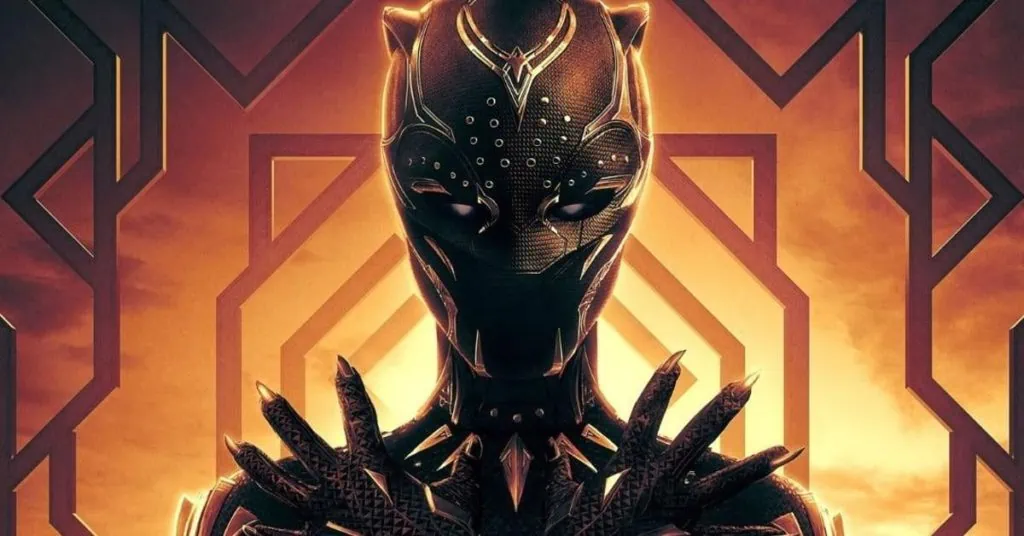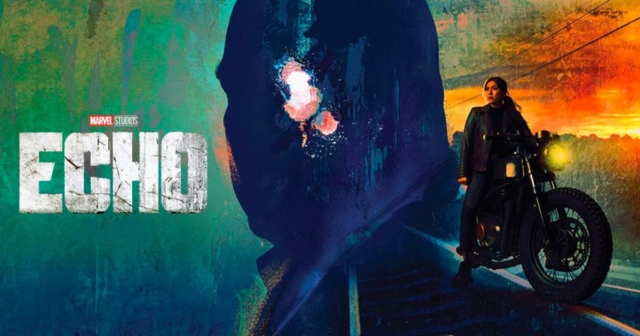Share this:
Of the Marvel Cinematic Universe’s 33 theatrical titles, only the two Black Panther films are Academy Award-winners. Ruth E. Carter became the first Black woman to win multiple Oscars in any category with her 2023 win for Black Panther: Wakanda Forever, cementing her legacy as a visionary costume designer. In fall 2023, she brought many of her most famous creations to the Charles H. Wright Museum of African-American History in downtown Detroit. Her exhibit is called “Afrofuturism in Costume Design”.
From Malcom X and Amistad to her own dress for the 2019 Academy Awards ceremony, Carter’s work is consistently breathtaking. As a diehard lover of Wakanda Forever and a Metro Detroit native, I had to see Carter’s Black Panther costumes in person. I’ve been obsessed with Shuri’s superhero costume design since I first saw Wakanda Forever, and couldn’t wait to get up close and personal with these works of art.
Without a doubt, the highlight of the exhibition was seeing Ruth E. Carter’s incredible designs for Wakanda Forever. I love Shuri’s Black Panther suit and think it’s one of the best superhero costumes ever made, or certainly, one of the best in the MCU. Seeing it in person was wonderful, especially because it’s so much smaller than I expected. The suit (and Letitia Wright’s Shuri herself) has such a presence on screen, it was shocking to see how tiny it looked next to every other costume.
The gold and silver details on Shuri’s suit are my favorite part because they pull in aspects of her brother, her cousin, and her own traditional outfits. Her suit is much fiercer than T’Challa’s, displaying an open-mouthed panther on the mask, similar to her father T’Chaka and cousin N’Jadaka. The gold accents on her suit come from those relatives as well, while the silver comes from T’Challa’s.
Apart from the ferocious helmet design, Shuri’s suit also has claw-like pauldrons on her shoulders that make the suit seem sharper than T’Challa’s. This effect is also enhanced by the dagger-like silver and gold lines on the hips. Shuri is equipped with more weaponry than her brother, thanks to the vibranium panther gauntlets integrated into her forearms.
The helmet is my favorite part of Shuri’s suit, and I particularly love the small dots that recall the traditional face paint she wears at T’Challa and Ramonda’s funerals. (As well as the war paint she applied in Black Panther and Avengers: Endgame). The circular shape on top of her helmet distinctly resembles a tiara or delicate crown, symbolizing Shuri’s ascendancy to the throne of Wakanda, following her mother’s death. Of course, she ends up rejecting the throne, but I’m going to ignore that fact for now, since Shuri’s entire arc in Wakanda Forever built up to her placing her peoples’ safety above her own desires.
Shuri and M’Baku’s (Winston Duke) funeral garments were also on display, standing out against the other costumes thanks to their stark white appearance. I watched Black Panther: Wakanda Forever 11 times thinking Shuri’s elephant tusk earrings dangled from her earlobes, but seeing the costume in person revealed that they were always attached to her headband!
I love discovering new details about costumes when you see them in person rather than on screen. I still have fond memories of my first movie costume exhibition, when I saw The Hunger Games Exhibition in New York City in 2015.
The same authenticity and respect Ruth E. Carter poured into the costume design for Black Panther is on full display for multiple cultures in Wakanda Forever. Carter dug into Mesoamerican clothing to bring Namor (Tenoch Huerta) and his people to life.
Namor’s headdress is a work of art that everyone appreciated in the film, but seeing his costume in person was a different experience altogether. The feathers are enormous, cascading down the back of the costume, an area we didn’t see on film. The colors popped on his entire outfit, and it’s even more impressive when you remember that every Talokanil costume had to be waterproof since the actors actually filmed underwater.
Similarly, Riri’s (Dominique Thorne) Talokan costume is far more intricate than viewers could tell on screen. Unfortunately, Namora’s costume was not part of this exhibition, but I really want to see it in person since her headdress is just as striking as her cousin’s.
Of course, there were several iconic costumes from the original Black Panther film on display, too. The superhero suit of Chadwick Boseman’s T’Challa took center stage, but unfortunately, it was so centered it was impossible to get up close to. T’Challa’s primary Black Panther suit is actually my least favorite of the several we’ve seen on screen. I prefer Shuri’s and his original suit from Captain America: Civil War over the one he sports in subsequent films.
The suit is still very striking, especially with how large it is compared to Shuri’s. The helmet is absolutely iconic, and seeing details like the vibranium necklace in person was pretty special. I quite like the forearms on his suit as well, and the large gloved hands with hidden panther claws.
T’Challa’s suit overall is very understated compared to Shuri’s, which makes sense since T’Challa’s costume had more of an emphasis on stealth over the aggressive and ornamental qualities seen in Shuri’s.
Angela Bassett’s costume for Queen Ramonda was on display as well, setting the stage for the Black Panther portion of the exhibition. Her dress is even more striking in person, especially the crown inspired by traditional South African wear.
One of my favorite pieces of movie trivia is that the crown was 3D-printed, a fact I remember from the Black Panther press circuit in 2018 (Hela’s crown in the preceding MCU film Thor: Ragnarok was 3D-printed as well, so the crown-making stuck in my mind).
Also on display was Killmonger’s (Michael B. Jordan) first costume, complete with a custom wig created specifically for this exhibition. His shoes are super fancy and were a part of the costume I never noticed when watching the first movie! W’Kabi’s (Daniel Kaluuya) Border Tribe costume was on display as well, and the patterned blanket was really interesting to see in person.
Finally, Ayo’s (Florence Kasumba) Dora Milaje costume was brought to complete the set of outfits. In my opinion, a Dora Milaje uniform is essential to an exhibition like this, since they’re so striking and immediately recognizable. I identified the costume as Ayo’s before even reading the informational card, which taught me that every Dora’s costume is slightly different. They include patterns specific to the character wearing the uniform.
The bead work on the uniform is fascinating to look at, and it was awesome to see kimoyo beads on multiple mannequins’ wrists. Once again, I was surprised by the shoes on the costume, which are apparently shaped like hooves and another detail I never noticed in the films. The Dora Milaje uniforms are certainly highlights of Wakandan clothing!
My focus was entirely on the Black Panther costumes, so I didn’t spend much time with Carter’s other work there. I did check out her costumes from Selma, a movie I remember watching in high school, and I walked around the rest of the costumes as well. Her designs for Coming 2 America were given a pride-of-place position right outside the exhibition, and they were quite eye-catching.
I was also extremely impressed with the dress Ruth E. Carter wore to the 2019 Academy Awards, which I hadn’t realized she designed herself! It’s the first costume you see when entering the exhibition, and it’s an absolute work of art. The colors are deep and rich, while the entire dress glimmers slightly. It was a great starting point for the exhibit and immediately impresses visitors.
Before Black Panther, I’m not sure if I paid very close attention to certain aspects of filmmaking like costume and production design. Ruth E. Carter’s work on both Black Panther films and throughout her career is insanely impressive. I was delighted when she won a second Oscar for Wakanda Forever because it’s certainly well-deserved. Each of her costumes, from fantastical superheroes to civil rights leaders, to her own ceremonial dress, stand out in their own way, and draw your attention.
Experiencing Carter’s exhibition at the Charles H. Wright Museum was a highlight of my holiday season, and I can’t wait to see more in the future! Ruth E. Carter’s “Afrofuturism in Costume Design” Exhibition remains on display at the Charles H. Wright Museum until March 31st, 2024. Starting on May 11th and ending on December 1st, 2024, the exhibition moves to the American Revolution Museum at Yorktown in Williamsburg, Virginia. You can find more of my photographs from the exhibition on Instagram @goldenninjaphotography.
Do you plan to visit this exhibition some time before it ends? Let us know on social media @mycosmiccircus or on The Cosmic Circus Discord!
Black Panther: Wakanda Forever Effortlessly Enriches the MCU
Echo Review: An Intimate and Gritty Marvel Experience
Share this:
Hi! I’m a huge Marvel, DC, and LEGO fan. I run my own YouTube channel (GoldenNinja3000) and write/host podcasts for The Cosmic Circus. I also created and produced the LEGO Ninjago short film “Golden Hour”.
Uday Kataria has 78 posts and counting. See all posts by Uday Kataria
Copyright © 2021 The Cosmic Circus. All rights reserved.
Digital Marketing & Design by Yellow Falcon

